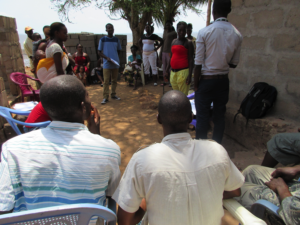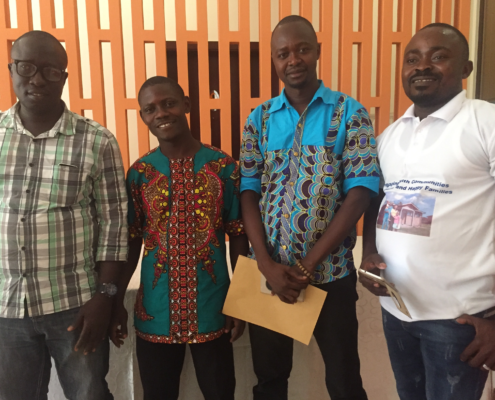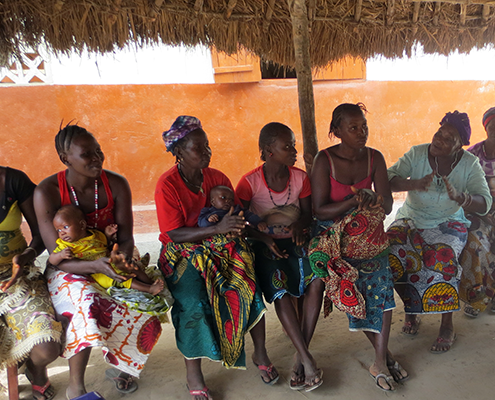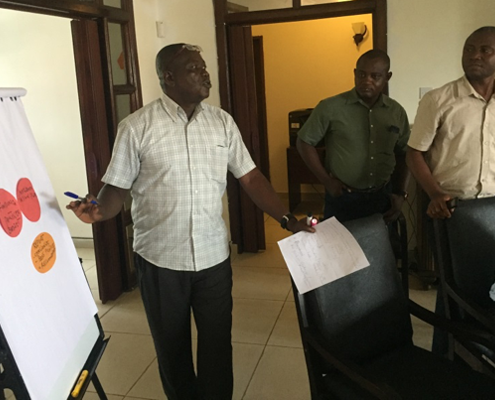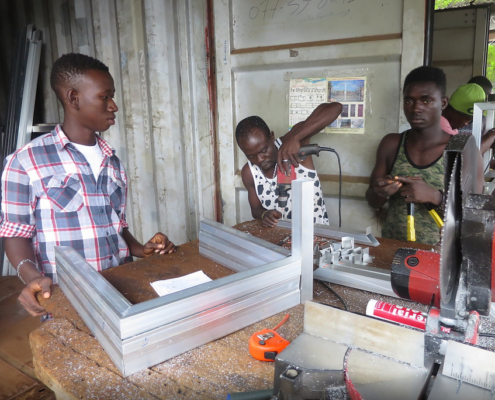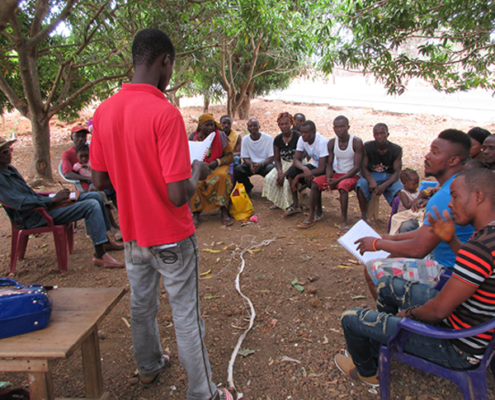HC3 Sierra Leone worked with the Ministry of Health and Sanitation (MOHS), Health Education Division (HED) to improve reproductive, maternal, neonatal and child health (RMNCH) outcomes through social and behavior change communication (SBCC) programming. Recovery from Ebola means repairing a health system that was under extreme duress during the outbreak, and restoring trust in this system, which was made more fragile as fear escalated and scarce resources were deployed to contain the disease. It’s important to note that even before the Ebola outbreak, only 54% of babies were delivered in health facilities and while infant and child mortality rates have improved in Sierra Leone over time, the maternal mortality rate is the highest the world. HC3 Sierra Leone used a highly engaging and participatory approach to encourage community members to return to health facilities for maternal and child care—while also providing individuals with the skills and confidence to practice optimal RMNCH behaviors at home. The overarching campaign platform – Get Kol Art, Pik Welbodi (Get Peace of Mind, Choose Health) was supported through mass media and community engagement facilitated through an experiential toolkit, Journey to a Bright Future. Community activities raised awareness, built skills, fostered community led solutions to RMNCH challenges and strengthened linkages between communities and health facilities.
HC3’s work in Sierra Leone was grounded in the understanding that behaviors and norms operate in a complex socio-ecological context—and that successful programs require communication interventions at multiple levels. As such, the program was also working at the service and structural level, assisting the government to revitalize national strategies and produce job aids, and strengthening their capacity to design, implement and evaluate SBCC programs and have more effective knowledge management processes and systems.
At the national level, HC3 activities included:
- The design and roll out of the Get Kol Art, Pik Welbodi campaign including the centerpiece radio magazine program featuring drama, reality and interactive host segments. The radio program linked to community engagement and facility makeover efforts while more deeply engaging listeners in exploring RMNCH issues through community-level radio listening groups.
- Supporting the MOHS/HED to revitalize the National Health Promotion Strategy including a new section on Risk Communication.
- Providing CCP’s flagship Leadership in Strategic Communication course for government and key partners to build their leadership skills in SBCC.
- Assessing knowledge management gaps and strengthening systems for improved sharing of health promotion materials and information.
- Supporting the development and dissemination of a standardized RMNCH Messaging Guide
- Providing technical assistance through existing structures, including the Social Mobilization Pillar and the Community Health Worker Technical Working Group.
At the community level, the program focused on catchment communities around five clinics in five districts – Western Urban, Western Rural, Tonkolili, Bombali and Port Loko.
SBCC Activities included:
- Designing and rolling out an innovative participatory community engagement approach using the Journey to a Bright Future toolkit to inspire individuals to practice optimal RMNCH behaviors, including care-seeking. Using identified aspirations, emotional responses and champions as agents of change, community members identify barriers to health and doable actions, and find solutions that lead to improved health.
- Fostering community ownership in health services by motivating individuals to get involved in health facility “makeovers.” Community members identify facility-based issues that make it less welcoming and functional—for example, leaks in the ceiling or lack of partitions for privacy—then provide hands-on assistance to help improve them with supplies supported by HC3. These efforts run in tandem with those by other USAID-funded partners, which are making more substantive structural and quality service delivery improvements. Community members will be recognized and celebrated for their part in the improvements through a series of events.
- Building the capacity of community mobilizers in participatory SBCC methodologies through implementation of the Journey to a Bright Future and Radio Listening Groups.
- Rolling out the Get Kol Art, Pik Welbodi campaign in communities, tying together the various components of the program under this unique platform designed to create positive and lasting impressions related to the benefits of optimal RMNCH behaviors.
HC3 Sierra Leone also conducted qualitative and quantitative research to better understand knowledge, behaviors, attitudes and practices that affect uptake of optimal RMNCH behaviors; incorporate the findings into program design; and monitor outcomes.

